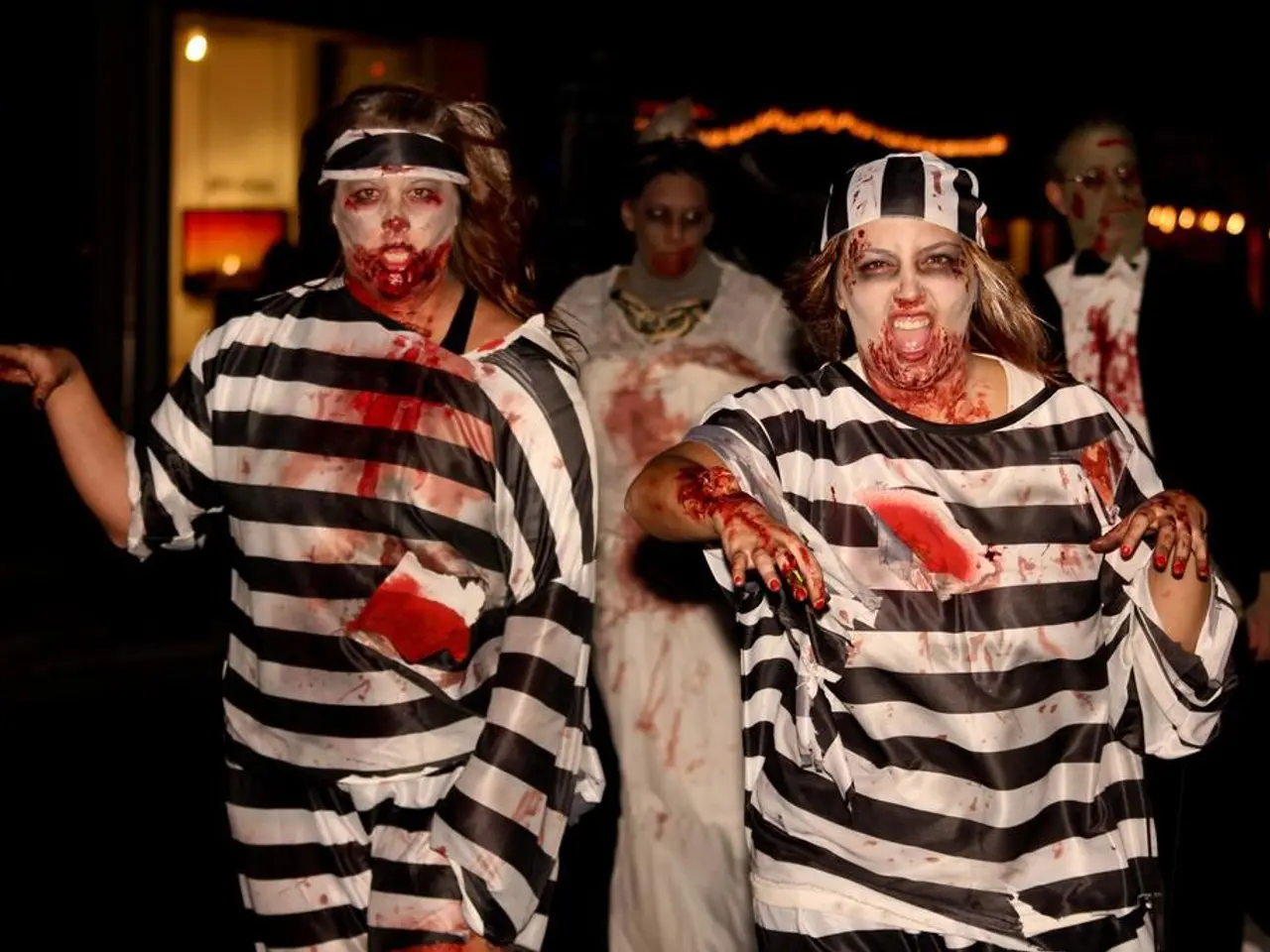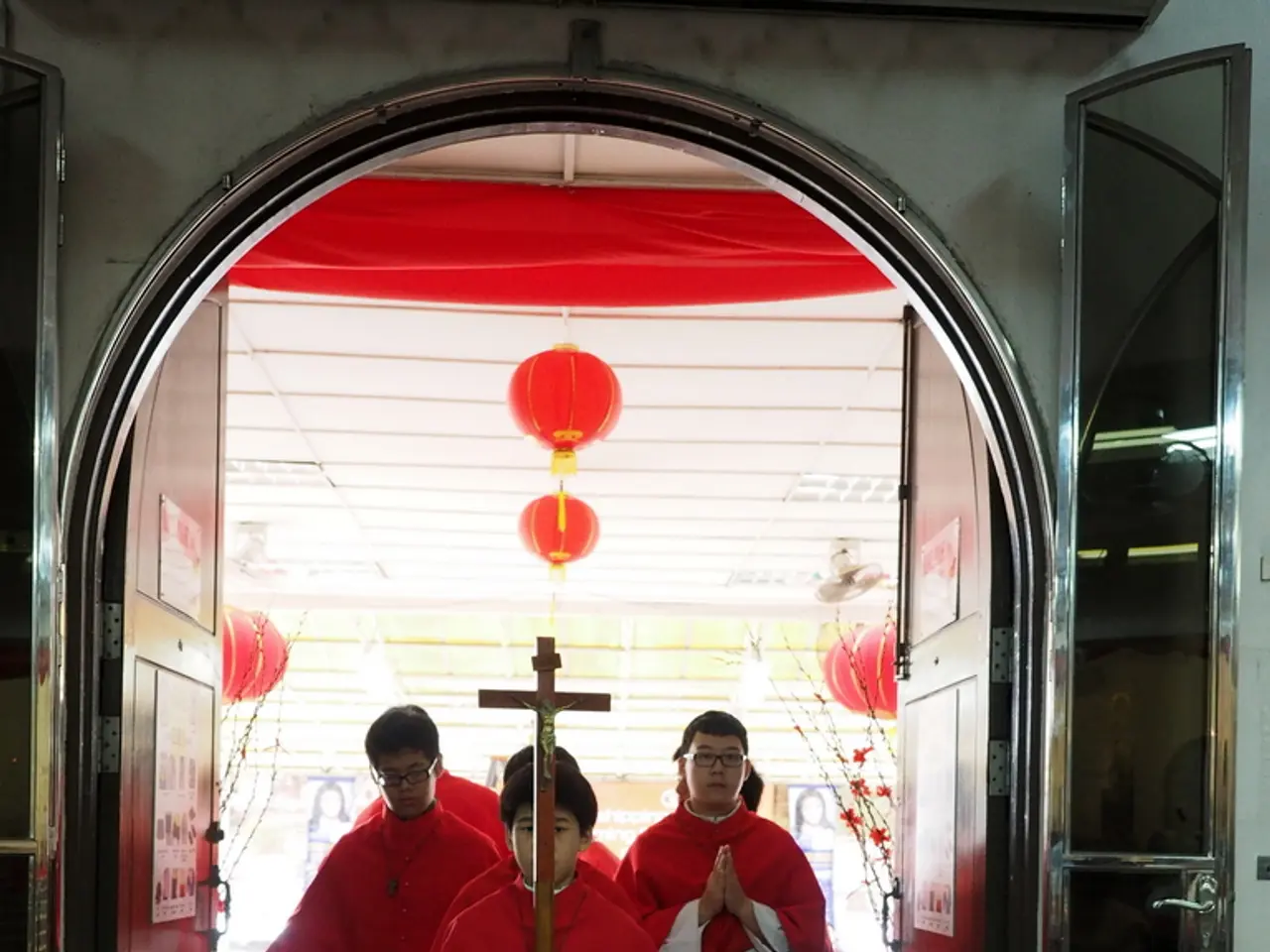The Possible Origins of Ghostly Wardrobes: A Reflection of Prior Personal Appearances?
In the realm of paranormal lore, ghosts often appear wearing clothing, and this phenomenon can be explained by the concept of residual self-image and mental constructs. When a person has an out-of-body experience or their spirit is perceived as a ghost, the image they or others see is often based on how they remembered themselves when alive.
This concept aligns with the idea of a residual self-image—the mental image a person holds of their body and appearance at the time of death or during near-death or out-of-body experiences. Such mental constructs manifest in the form of ghosts appearing clothed, often in period-appropriate or characteristic attire. This appearance helps to identify and contextualize the apparition.
For instance, classic ghost photos like "The Brown Lady of Raynham Hall" show a figure wearing a distinct dress, which corresponds to historical accounts of the spirit’s identity and era of life. The clothing acts as an ethereal remnant or "spectral attire," reinforcing identity and the continuity of the mental/self-image beyond physical death.
The stories of Martha Johnson and Clarence Godfrey may provide some clues as to why ghosts are often seen wearing clothing. In one example, a woman named Martha Johnson appeared to her mother during an out-of-body experience, wearing an almost white blouse with her hair in a ponytail. This apparitional clothing and hairstyle corresponded to how she experienced herself during her out-of-body experience, not her actual attire while sleeping. Similarly, Clarence Godfrey, in another instance, appeared to the witness wearing business attire during an out-of-body experience, not his actual night clothes.
Psychoanalytic perspectives on doppelgängers and doubles—figures that are sometimes interpreted as ghost-like—underscore the role of self-image and mental projection in forming these apparitions. Freud and others suggest that such doubles arise from repressed thoughts and ego constructs, linking appearance (including clothing) to mental state and self-representation.
In the context of the 1999 science fiction film The Matrix, residual self-image refers to the way a person imagines him or herself to physically appear. While inside the Matrix, a person's appearance is a mental projection of their digital self. This idea suggests that ghosts might not exist in any particular form but are given form by their own residual self-image.
Interestingly, ghosts like the White Lady of Stow Lake and the Grey Lady of Willard Library also have names derived from their clothing or aura. The Hat Man, often described as wearing a dark cloak and a hat, is another example of a ghost named for the clothes it allegedly wears.
It's worth noting that ghost photographs often capture ghosts as strange mists, orbs, or lights, not in humanoid forms. However, the idea that the camera may capture a spirit's "true" form, with our minds filling in the blanks to see a human form, adds another layer to the mystery.
The Society for Psychical Research has a page discussing ghosts wearing clothes, focusing on out-of-body experiences and OBE apparitions. This research further supports the idea that ghosts appearing clothed is not random but deeply connected to how spirits are cognitively framed either by themselves (in their residual self-image) or by those perceiving them, reflecting a mental or psychological construct consistent with out-of-body experience theories and paranormal lore.
- The spectral attire that ghosts often don can be attributed to the residual self-image, as seen in the case of Martha Johnson, who appeared to her mother wearing an almost white blouse and a ponytail, reflecting her self-image during her out-of-body experience.
- Similarly, in the realm of entertainment, the science fiction film The Matrix uses the concept of residual self-image to describe how people within the Matrix perceive their digital selves, suggesting that our self-image may influence how we manifest after physical death.
- In the world of fashion-and-beauty and popular culture, some ghosts even gain names derived from the clothing they supposedly wear, such as The Hat Man and the White Lady of Stow Lake, emphasizing the importance of appearance in our mental constructs, even beyond physical life.








